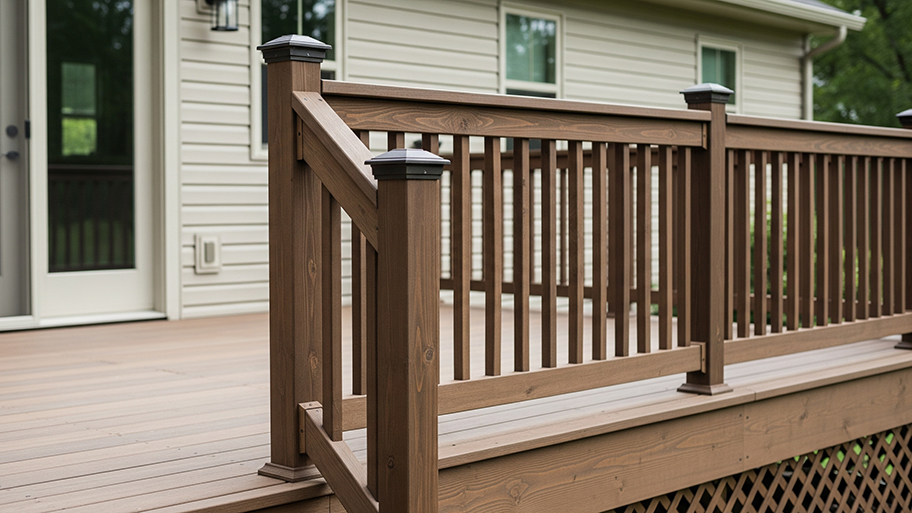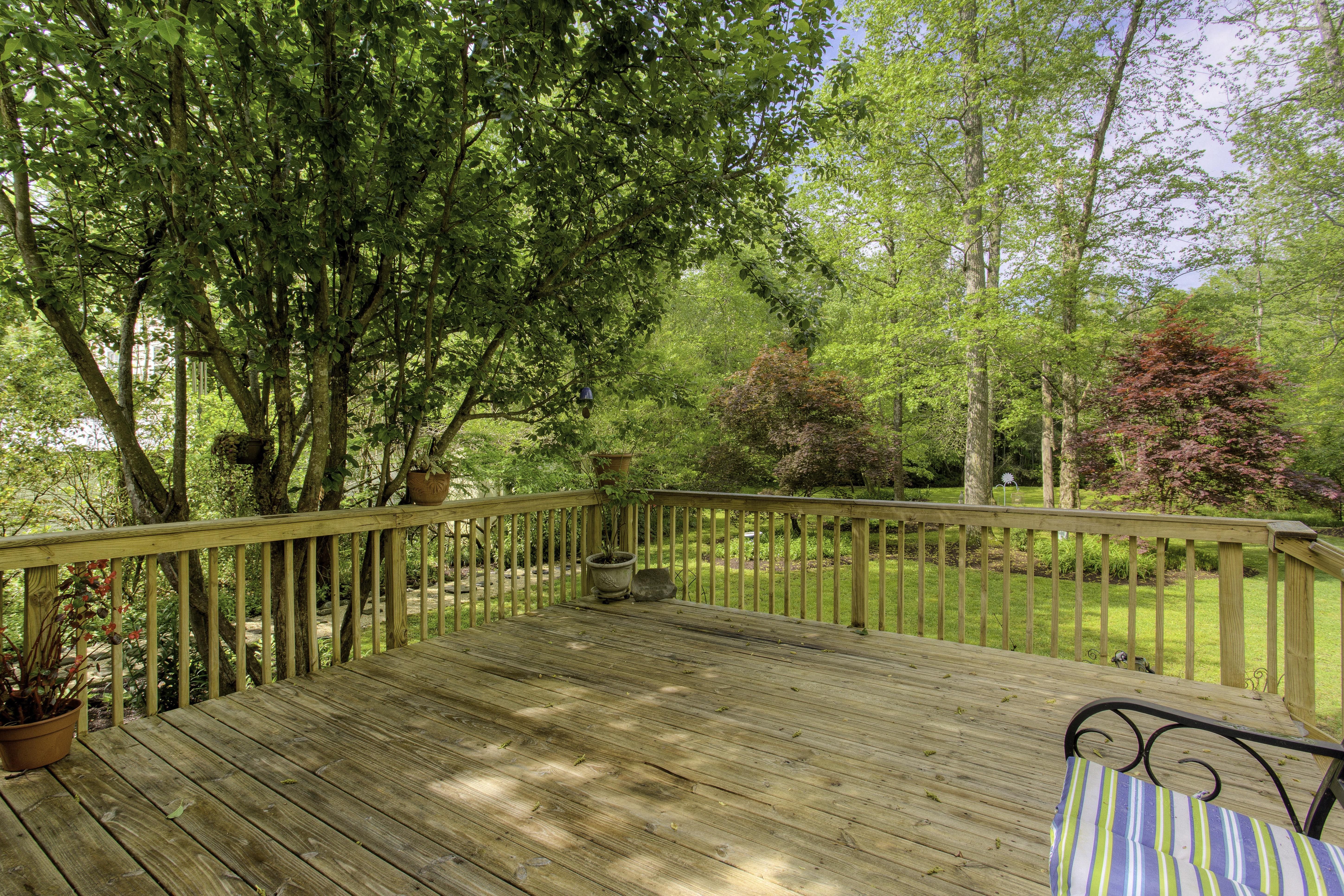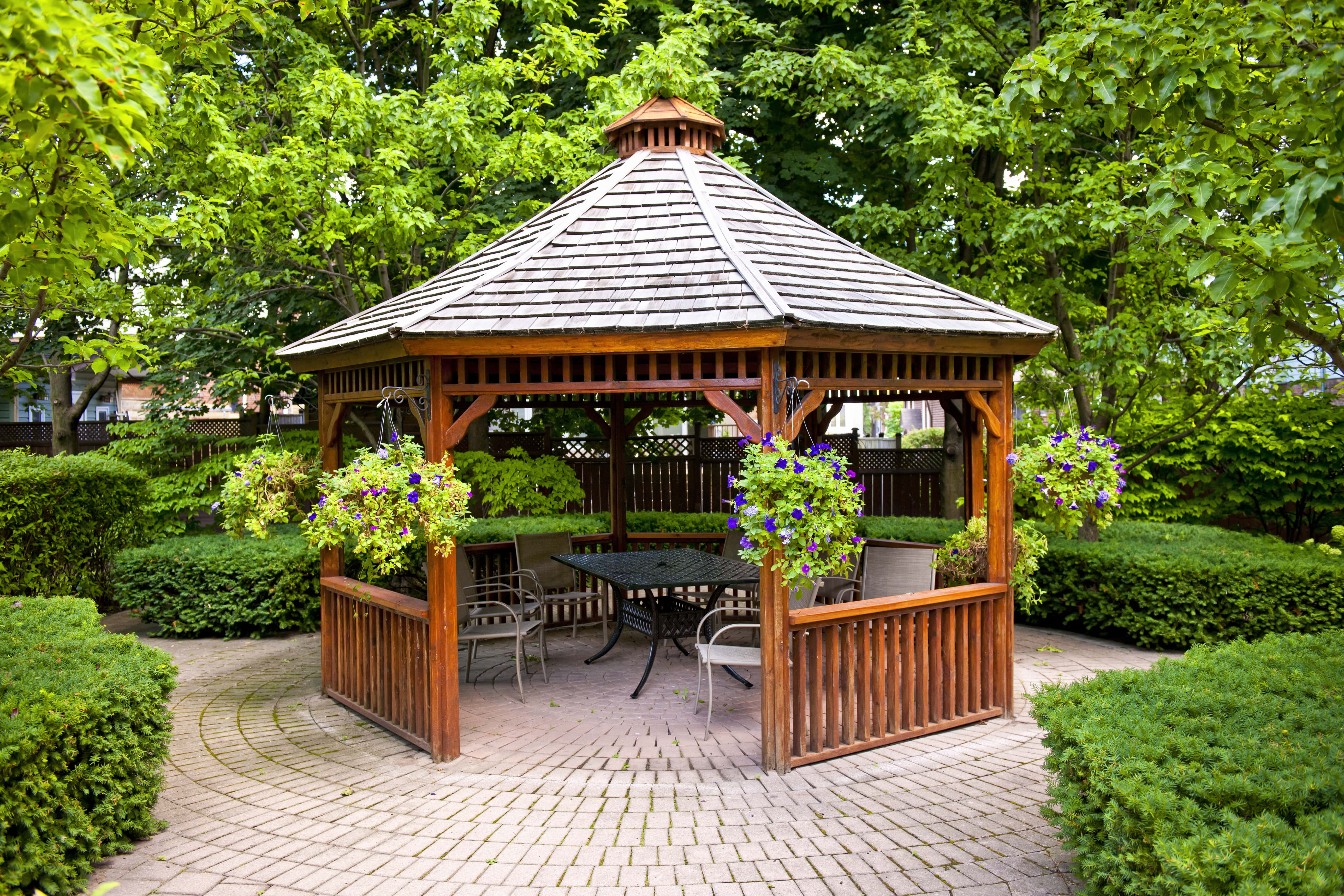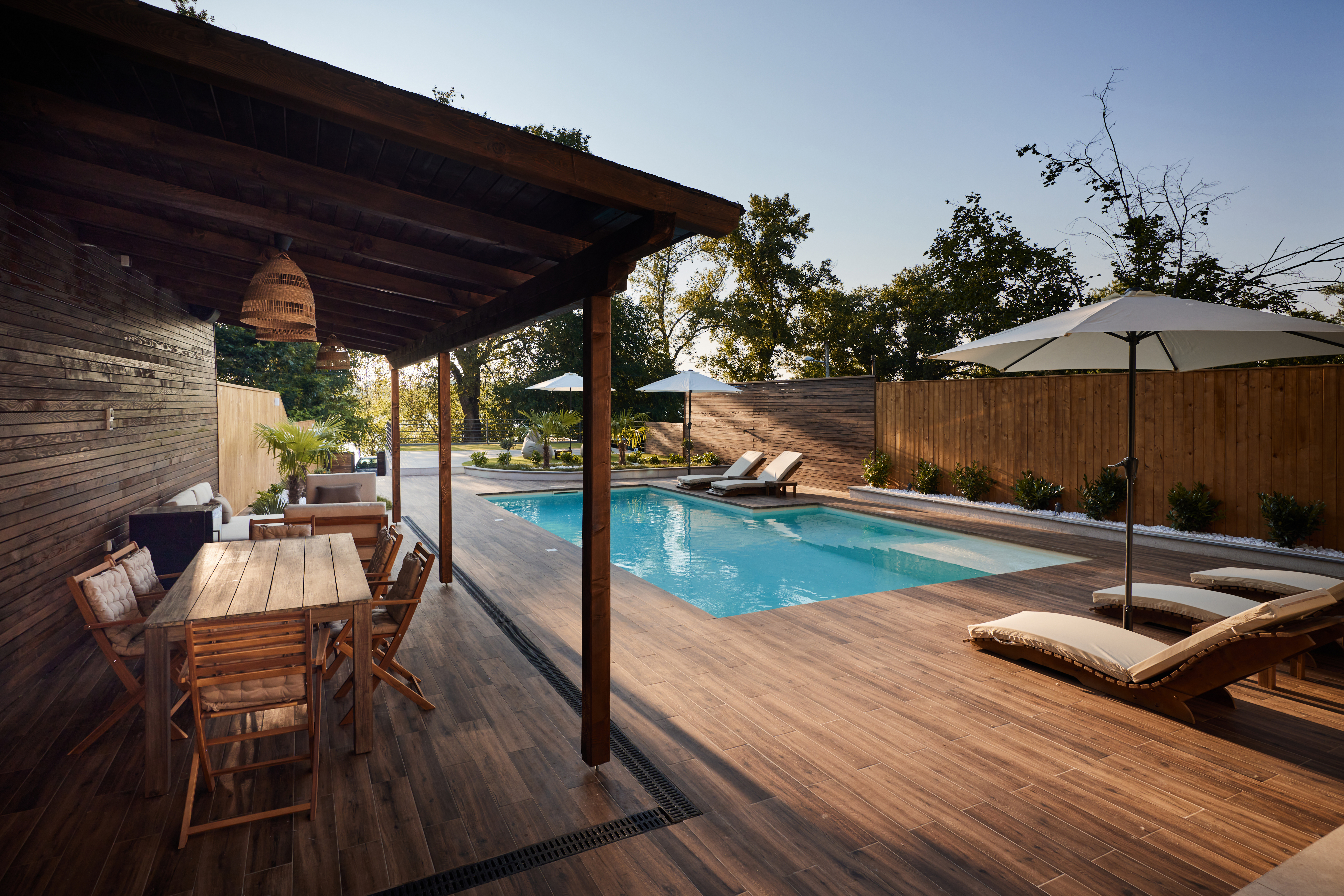Deck replacement costs depend on materials, any structural damage you need to fix, and more. This guide explores how much it costs to replace or repair a deck.
How Much Does a Floating Deck Cost? [2025 Data]
A floating deck costs an average of $2,500 to $14,750, with most homeowners spending $4,500 on average. Your price depends on deck size, material, and labor rates.


The main floating deck cost drivers are size, material, and labor rates.
Floating decks are a versatile, budget-friendly outdoor upgrade.
Custom features and site prep can increase your total project price.
Professional installation costs $15 to $35 per square foot and ensures safety and long-term durability.
Floating decks can boost outdoor living space and home appeal, offering an ROI of 40% to 55%.
A floating deck costs an average of $4,500 nationwide, with most homeowners paying between $2,500 and $14,750 for installation on average. The cost per square foot ranges from $20 to $60, depending on deck size, material, and labor. Understanding these factors helps you plan your floating deck project and budget effectively.
A floating deck adds accessible outdoor living space without the complexity of traditional deck foundations. Let’s walk through what impacts floating deck costs, so you can make smart decisions for your home.
Floating Deck Installation Cost Factors
Several factors influence your final floating deck cost, beyond just size and style. Let’s break down the main considerations:
Deck Size
The size of your floating deck is one of the most significant factors affecting your cost. Larger decks require more materials and labor, which increases the total price. Standard sizes, such as 10 feet by 10 feet, 12 feet by 16 feet, or 20 feet by 20 feet, each have different cost implications. Most floating deck installations are priced by the square foot, with rates landing between $20 and $60 per square foot.
While larger decks may benefit from economies of scale—reducing the per-square-foot price—they still come with higher total costs. Multi-level or unusually shaped decks also increase expenses, as they require more planning, materials, and skilled labor.
| Deck Size (Sq. Ft.) | Dimensions (Ft.) | Average Cost | Average Cost Range |
|---|---|---|---|
| 100 | 10x10 | $4,000 | $2,000–$6,000 |
| 192 | 12x16 | $7,700 | $3,800–$11,500 |
| 400 | 20x20 | $16,000 | $8,000–$24,000 |
Style
Floating deck style also plays a key role in floating deck costs. Common styles include ground-level, multi-tiered, platform, and freestanding decks. Simpler, ground-level decks are the most affordable, while multi-tiered or custom-designed decks with curves, built-in seating, or planters increase costs due to greater complexity and labor.
Basic floating decks are easier to maintain and install but may offer fewer features. Custom or multi-level decks can create a unique outdoor space but require more investment.
| Deck Style | Description | Pros | Cons |
|---|---|---|---|
| Ground-level | Sits close to the ground, simple design | Easy access, affordable | Limited elevation |
| Multi-tiered | Multiple levels, stairs connecting sections | Visual interest, versatile | Higher cost, more complex |
| Platform | Single, elevated surface | Clean look, flexible | Needs more support |
| Freestanding | Not attached to house, can be moved or adjusted | Flexible placement | May need extra bracing |
Location
Where you live has a significant influence on your floating deck costs. Labor rates, material prices, and climate all vary across regions. Urban areas often see higher labor costs, while rural locations may face increased delivery fees or limited contractor options. Local building codes and climate factors, such as hurricane zones or frost lines, can require additional supports or materials, raising costs.
Labor
Floating deck installation involves skilled professionals such as general contractors, carpenters, or deck specialists. Labor rates range from $15 to $35 per square foot, depending on location and expertise. Minimum service fees can make small projects more expensive per square foot. More complex designs, difficult site conditions, or tight schedules can increase labor costs further.
Permits
Permits are often required for floating deck installation, especially if the deck exceeds a certain height or is located in a regulated area. Deck permit costs range from $50 to $500, depending on your city or county. Obtaining permits may require submitting plans and passing inspections, which can add to your timeline and budget.
Features
Adding features such as deck railings ($20 to $60 per linear foot), stairs ($25 to $50 per step), built-in benches, planters, or lighting will increase your floating deck cost.
Customizations like unique shapes or accessibility features (such as ramps) can require extra materials and labor. Upgrades such as composite decking or integrated lighting also add to the total project price.
Additional Cost Factors
Consider the impact of these other costs on your floating deck budget:
Project complexity, such as multi-levels or curves, increases design and labor needs.
Accessibility issues, such as small yards or tight spaces, can raise delivery and labor costs.
Site preparation, including grading or debris removal, adds to your total.
Delivery fees for heavy materials and post-construction cleanup may apply.
Design or architectural fees are common for custom plans.
Some areas require inspections, which can add to your costs.
Additional Costs to Consider
Floating deck costs go beyond installation. Here are a few other expenses to keep in mind:
Warranties
Many contractors and manufacturers offer warranties on materials or workmanship. These can be included or come at an additional cost. Warranties provide peace of mind and may save you money on repairs, but longer or more comprehensive coverage increases upfront cost.
Operating Costs
Ongoing costs for floating decks include cleaning supplies, sealants, and seasonal care. If you add electrical features, such as lighting, you’ll see a small increase in your utility bills.
Maintenance
Maintenance requirements depend on your deck material. Wood decks require annual cleaning and sealing, which costs $150 to $400 per year. Composite decking is lower maintenance, needing only periodic washing. Regular care extends the life of your deck and can prevent expensive repairs later.
Taxes
Installing a floating deck could increase your property taxes, depending on local assessments. Some municipalities assess home improvements annually, which could slightly raise your tax bill.
Insurance
A new floating deck may impact your homeowners' insurance premiums. Some insurers require notification and may charge a small premium increase to cover additional liability. Contractors should carry their own insurance during installation, and you’ll want to confirm coverage for accidents or damage related to your deck.
Why You Should Hire a Floating Deck Pro
Homeowners would save $15 to $35 per square foot in labor costs, but for a project like this, those savings are not worth it. Talking to a local deck builder should open your eyes to the sheer amount of work—and specialty equipment—required to do the job correctly. While you can save some money, we strongly recommend leaving this to the pros.
Here’s why it’s ideal to hire a floating deck pro
DIY projects are inherently more risky, expensive, and take longer than pro work. Some other reasons to hire the right team are:
They understand building codes and permit requirements for your zip code.
Most homeowners lack the necessary tools for the job.
Having a pro scope the rest of your yard can be considered a casual, but free inspection.
A pro will understand how any trees, their roots, or utilities impact the project.
It’s obvious but often overlooked—hiring a pro will save you dozens of hours.
Prevents injury by ensuring the project is completed to safety standards.
A pro’s work is covered by a warranty that can save homeowners thousands if required.
If you want to DIY a floating deck
We don’t recommend a DIY here. However, there are some steps you can take to make the pro's job a bit easier. Sometimes, this can save you a bit of cash. Consider the following:
Clear the deck of any furniture, branches, leaves, barbecues, etc.
Have any utilities marked beforehand by calling 811.
If you have one, make sure your HOA approves the deck.
Make sure the path from your driveway to the deck area is clear.
Check your insurance policies. If your deck was damaged, it may be covered.
Also, check warranties. Finding you’re covered can be a welcome surprise.
Floating Deck Replacement vs. Repair
Deciding between repairing or replacing a floating deck depends on the extent of the damage and the deck’s age. Minor issues, such as loose boards or surface stains, are good candidates for repair, costing $250 to $2,500. If your deck has widespread rot, structural issues, or is nearing the end of its lifespan, replacement is safer and more cost-effective. If repair costs exceed 50% of replacement, replacement is recommended.
Older decks may lack safety features or be out of warranty, making replacement a better investment in the long run. Always consider longevity and safety when deciding.
Does a Floating Deck Add Value to Your Home?
A floating deck can add value by improving your home’s outdoor living space and boosting curb appeal. The average return on investment (ROI) for floating deck projects is 40% to 55%, which is competitive with other outdoor improvements. High-quality materials, professional installation, and a design that fits local trends all help maximize ROI.
Beyond resale value, floating decks create appealing spaces for entertaining, relaxing, and enjoying your yard. Prioritizing safety, efficiency, and universal design can further increase your home’s appeal to buyers.
Tips to Reduce Cost While Installing a Floating Deck
Consider these cost-saving strategies to make your floating deck project more budget-friendly:
Choose economical materials that offer durability and low maintenance.
Opt for a simple, standard deck design to minimize labor and material costs.
Get multiple quotes from local deck builders to compare floating deck costs.
Schedule installation during the off-season for potential discounts.
DIY certain tasks, such as site prep or finishing, if you have the skills.
Maintain your floating deck regularly to avoid costly repairs.
Check licenses and insurance coverage for your pro.
Ensure you obtain an accurate timeline for the work.
Have your pro double-check your permit status.
Make sure your quote is itemized. If it’s just a single price with no breakdown, have them explain what that price is based on (e.g., hours, materials, etc.).
How Angi Gets Its Cost Data
Home is the most important place on earth, which is why Angi has helped more than 150 million homeowners transform their houses into homes they adore. To help homeowners with their next project, Angi provides readers with the most accurate cost data and upholds strict editorial standards. We extensively research project costs to develop the pricing data you see, so you can make the best decisions for you and your home. We rely on reputable sources, including the U.S. Bureau of Labor Statistics, academic journals, market studies, and interviews with industry experts—all to ensure our prices reflect real-world projects.
Want to help us improve our cost data? Send us a recent project quote to [email protected]. Quotes and personal information will not be shared publicly.
The homeowners guide to deck and porch services
From average costs to expert advice, get all the answers you need to get your job done.
- •

The average cost of a deck railing depends on size, type, material, and labor in your area. Check out this guide to determine what works for your budget.
 •
•Thinking about adding a deck to your home? Explore this guide to learn about the average cost to build a deck based on factors like size, material, and labor.

Why are my deck boards rotting? Several things could be to blame, including mold, termites, and moisture. Learn common causes and prevention methods.
 •
•Find who to hire to build a porch or gazebo—compare porch contractors, deck specialists, and gazebo builders, then take your next steps.

Before you build the outdoor space of your dreams, read this building a deck checklist brimming with information every homeowner needs to know.

